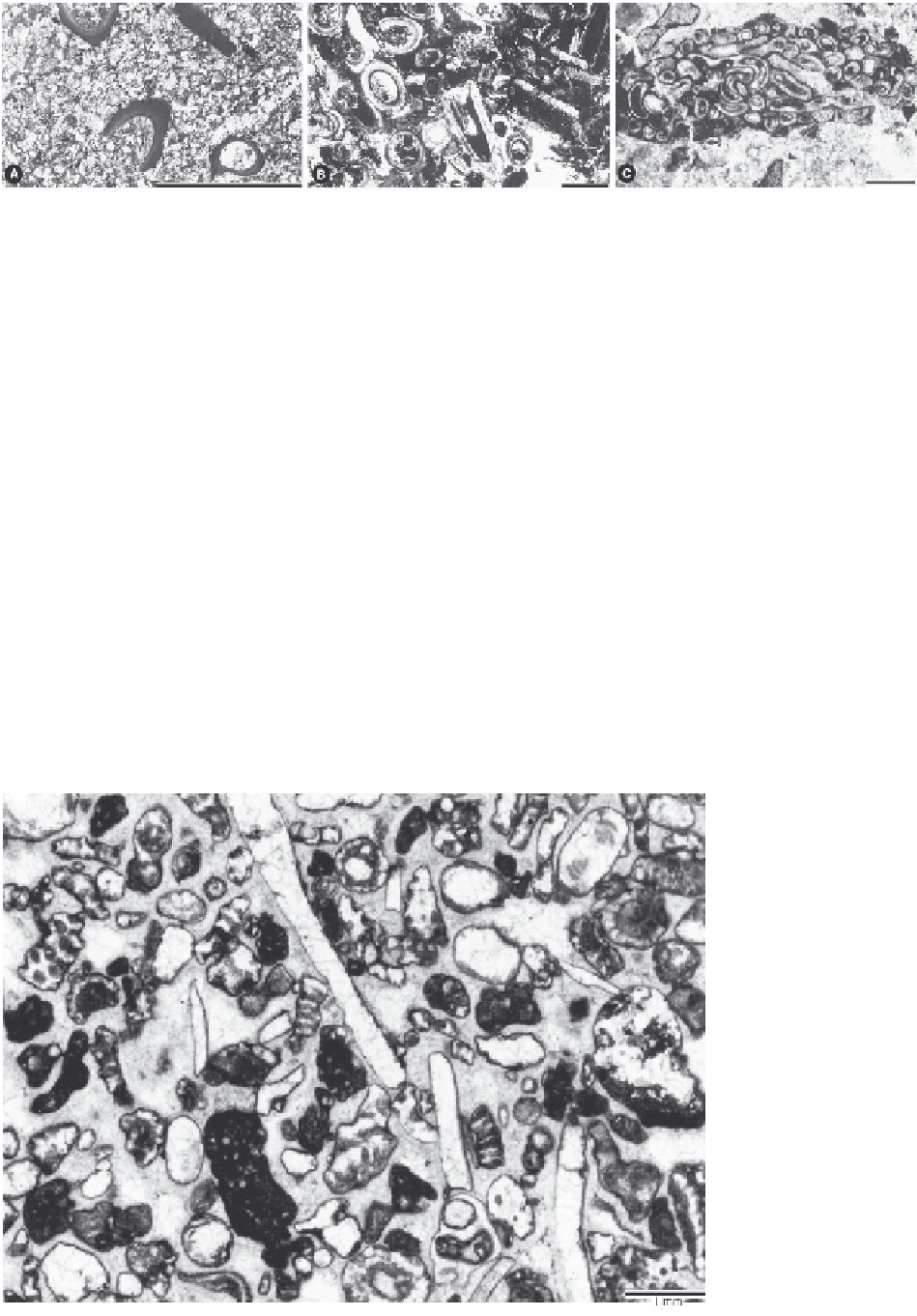Geology Reference
In-Depth Information
Fig. 11.4.
These three samples of serpulid limestones represent three different microfacies types
defined by frequency,
allochthonous occurrence (
A, B
), and autochthonous growth (
C
). This is a reduced picture of Fig. 10.48. Scale is 2mm.
association of broken serpulid tubes with quartz sand,
indicating a quite different near-coastal depositional en-
vironment compared with that of samples B and C. The
abundance of serpulid tubes in sample B is caused by
hydrodynamic concentration, that in sample C by ser-
pulids growing in colonial aggregates that can form
reefs. These differences in the origin of abundance place
the samples into two separate microfacies types.
Geologie- und Bergbaustudenten in Österreich,
21
, 6-64
Gill, D. (1993): Discrimination of sedimentary facies by as-
sociation analysis. - Mathematical Geology,
25
, 471-482
Hladil, J. (1986): Trends in the development and cyclic pat-
terns of Middle and Upper Devonian buildups. - Facies,
15
, 1-34
Machel, H.G., Hunter, I.G. (1994): Facies models for Middle
to Late Devonian shallow-marine carbonates, with com-
parisons to modern reefs: a guide for facies analysis. -
Facies,
30
, 155-176
Rüffer, T. (1995): Entwicklung einer Karbonat-Plattform:
Fazies, Kontrollfaktoren und Sequenzstratigraphie in der
Mitteltrias der westlichen Nördlichen Kalkalpen (Tirol,
Bayern). - Gaea heidelbergensis
1
, 1-282
Schott, M. (1984): Mikrofaziell-multivariate Analyse einer
rhäto-liassischen Karbonatplattform in den Nördlichen
Kalkalpen. - Facies,
11
, 229-280
Städter, T., Koch, R. (1987): Mikrofazielle und diagenetische
Entwicklung einer devonischen Karbonatfolge (Givet) am
SW-Rand des Briloner Sattels. - Facies
17
, 215-230
Wilson, J.L. (1975): Carbonate facies in geologic history. -
471 pp., Berlin (Springer)
Further reading:
K146, K205 - K208
Basics: Microfacies types
Aigner, T. (1984): Dynamic stratigraphy of epicontinental
carbonates, Upper Muschelkalk (M. Triassic), South-Ger-
man Basin. - Neues Jahrbuch für Geologie und Palä-
ontologie, Abhandlungen,
169
, 127-159
Bachmann, M. (1994): Die Karbonatrampe von Organya im
oberen Oberapt und unteren Unteralb (NE-Spanien, Prov.
Lerida): Fazies, Zyklo- und Sequenzstratigraphie. - Be-
richte aus dem Fachbereich Geowissenschaften der Uni-
versität Bremen,
54
, 202 pp.
Flügel, E. (1972): Mikrofazielle Untersuchungen in der Trias:
Methoden und Probleme. - Mitteilungen Gesellschaft der
Fig. 11.5.
Exercise:
Look for bottom/top
structures - improve
orientation!
Which sort of clasts?
Which fossils can be
recognized?
What do they indicate?
How are they pre-
served?
Some of them are
indicative for the age
of the sample!
Which depositional
environment?
What about pore space
and cement?
Which differences exist
between here and Pl.
100 and Pl. 101?
Which criteria are
effective in defining
an environmentally-
sensitive MFT?
For answers see
Appendix!

